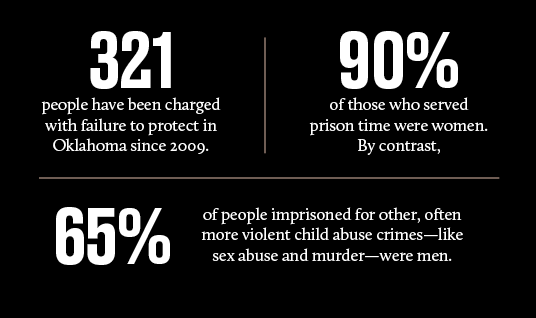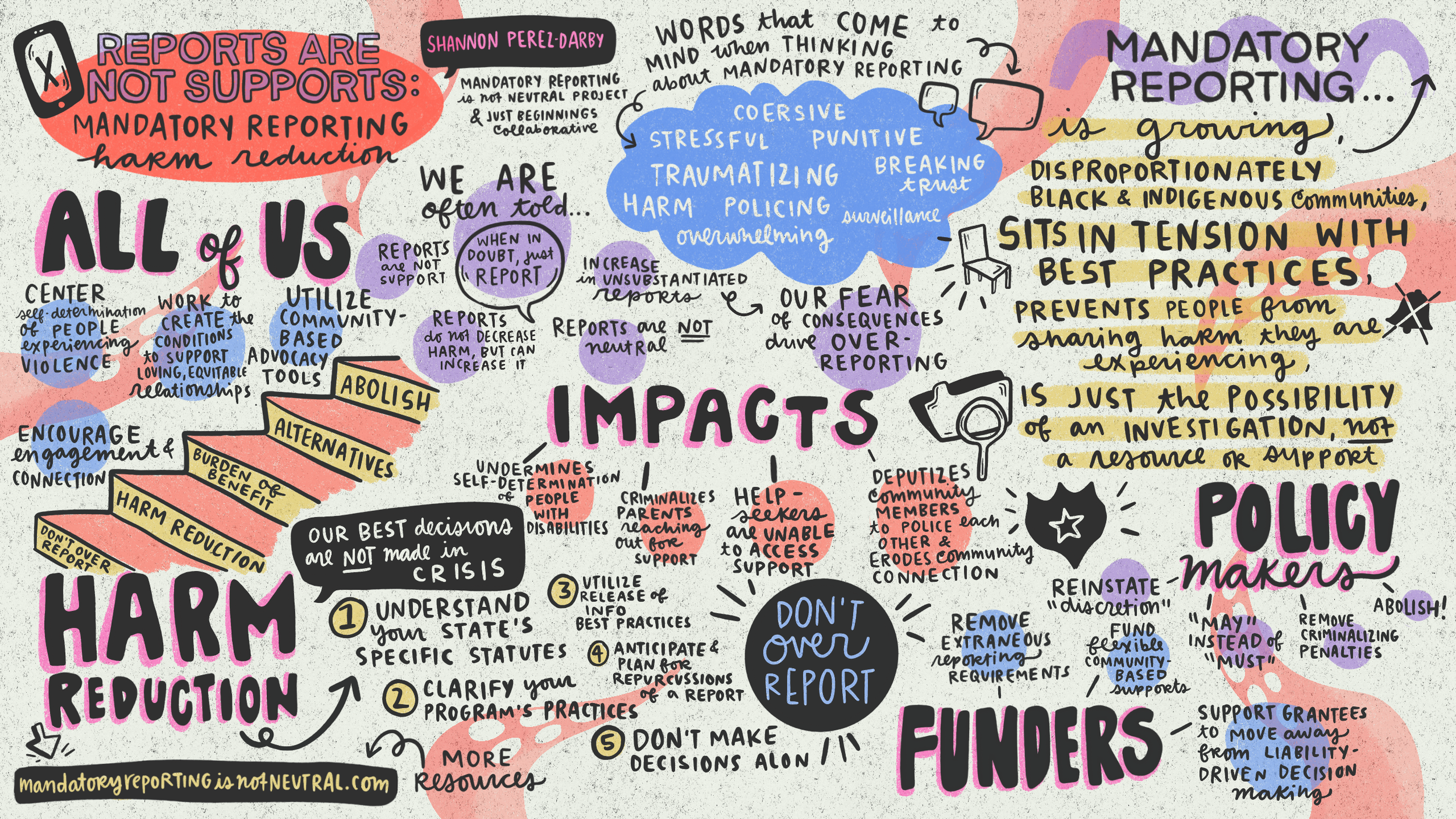By Cassandra Aho, Manager of Program Innovation, NRCDV
“The sun was bearing down, and the wind wrapped her fear around us both as we visited on her steps. When she started to tell me about her situation, I made sure that she knew that I was a mandated reporter and the limits of confidentiality designated by the organization I worked for. I bounced her baby on my lap and made funny faces as I listened to the horrifying scenes pouring out of her. Her disclosure was one of the hardest I had ever listened to in my career as an advocate. When she told me that he would kill her if he found out she was talking to me, I believed her with every fiber of my being.
Immediately I went to work to find her safe options, however, the organization I worked for decided I needed to report her both to the police and to child welfare. The CPI [Child Protective Investigator] on her case called me and bragged about his ‘tough love’ approach and threats to charge her with failure to protect while the police came and went with no evidence to charge the abuser. The whole family was gone the next day and the last contact I had with her was a voicemail she left saying that she trusted me, and I lied to her.” – DV Advocate, located in community-based pregnancy support organization
While many mandatory policies stemming from legislation such as the Child Abuse Prevention and Treatment Act of 1974 (CAPTA) and the 1994 Violence Against Women Act (VAWA) were “intended” to protect those experiencing violence, experts in the gender-based violence (GBV) movement have clearly shown that a great deal of these policies, including mandatory reporting (MR), can have dire consequences for survivors and their children. Not only do they force responders to react rather than support, but they continue to be used as a tool to criminalize and harm survivors and their families.
Leaders in the movement like Beth Richie have long addressed the harmful impacts on survivors and children of MR such as the over-policing and separation of Black and Brown families, inconsistent practices across sectors, the vague and problematic language of the laws, and lack of training for criminal justice and child welfare responders, to name a few. These leaders have also fought tirelessly to push back against the harmful practice of mandatory reporting. For a deeper dive into this history, please check the Color of Violence: The INCITE! Anthology and the works of Dr. Beth E. Richie.
Unfortunately, some advocates, especially those co-located within the criminal justice, child welfare and health sectors, are required to report. MR laws vary across states, counties and even sectors. The language of these laws can also be vague, leaving the decision on whether to report up to the organization or advocate. This offers little accountability for responder education or training.
Links between mandated reporting and hyper-incarceration
Further, mandatory reporting of gender-based violence has been shown to increase criminal justice surveillance and incarceration, especially for Black, Indigenous, and other People of Color (BIPOC) communities. Donna Coker, a Law Professor at University of Miami School of Law has made ending hyper-incarceration a central focus in her work, urging the gender-based violence movement to do the same.
 “While much attention of hyper-incarceration has focused on African American men, the biggest growth in incarceration numbers has been among women whose imprisonment rates have growth over 800% since the late 1970s, with the biggest increase among African American women.” - Donna Coker
“While much attention of hyper-incarceration has focused on African American men, the biggest growth in incarceration numbers has been among women whose imprisonment rates have growth over 800% since the late 1970s, with the biggest increase among African American women.” - Donna Coker
The prison system holds countless women, especially Black women, who were criminalized for the abuse that they endured, for surviving and staying alive.
Mother Jones also shed light on the horrifying intersect of hyper-incarceration of Black women and failure to protect laws that are continually used to demonize and charge victims of abuse in Oklahoma.
Not only is MR not neutral, in most cases it is harmful and can even be fatal for survivors, especially those facing oppressive systems. MR has been shown to increase child welfare and criminal justice investigations and revictimization at disproportional rates for Black and Brown families.
A study conducted by the National LGBTQ DV Capacity Building Learning Center and the National Domestic Violence Hotline, There's No One I Can Trust: The Impact of Mandatory Reporting on the Help-Seeking and Wellbeing of Domestic Violence Survivors (2016) explored the impact of mandatory reporting on help-seeking for domestic violence. A total of 3,616 domestic violence survivors and help-seekers participated in the study. Nearly 1 in 10 (9%) participants said someone they turned to for help reported what they shared to an official or authority figure. Most individuals shared that they received no warning that a report was going to be filed and described the impact that it had on their situations.
Quotes from participants:
“Police and CPS did nothing and abuser went on a rampage against us.”
“I had a telephone hotline operator escalate an anxiety attack into armed police presence and mandatory confinement, during which time I was abused by a county official. I was held, totally lucid, for four days. Took years to use the phone again.”
“Every time cops got involved, they never arrested him, so now he keeps coming after me knowing he’s getting away with it.”
Participants who were warned that a report would be filed stated that they felt it necessary to minimize experiences, hold back details or stay completely silent and stop help seeking to stay safe. One third of the study’s participants, mostly trans/gender variant and women, stated that they were too afraid of being reported and avoided support and help seeking all together because they were worried about child protective services (CPS) or police involvement.
The harmful conflation of child maltreatment and intimate partner violence
Experts like Dorothy Roberts have long made connections to CPS being an extension of policing Black and Brown families. But it wasn’t until 1990s legislation that policy and practice redefined child maltreatment to include exposure to IPV (regardless of the presence of physical abuse of a child) that child welfare became a central responder to domestic violence cases. This change seems to explain yet another crucial factor contributing to the widening racial disparities of Black children and families harmed by the child welfare system. By 2000, Black children comprised of 38% of the children in foster care, though only 16% of the child population.
Despite evidence of the intersection between child maltreatment and gender-based violence, departments of children and families (DCF)/CPS are overburdened with caseloads and often lack essential training or education about the multifaceted realities that survivors face. This worsens the struggle between caseworkers prioritizing children’s safety and community advocates working toward sustainable safety of nonviolent parents. Since the pandemic, there has been an even bigger push for domestic violence specialists to train, consult and coordinate with DCF/CPS workers. Futures Without Violence has several webinars that offer strategies for child welfare workers on how to partner and educate mothers/female caregivers about the impact of childhood trauma and domestic violence on themselves and parenting.
MR is not going to be abolished anytime soon, so how to create a space of “Mandatory Supporting”?
Though there is no doubt that the leaders in the GBV movement have transformed advocacy in attempts to redress the harmful impact of MR and other mandatory policies, clearly, more work needs to be done to decrease harms for survivors. In order to build community partner capacity with the goal of supporting, it is imperative to remember that advocates and responding organizations can take actionable steps to create a balance between organizational practices and survivor autonomy to reduce harms.
Action Step 1: Knowledge is Power! Mandated reporting laws require certain professionals to report child abuse and neglect concerns. While some states require all people to report, many states identify specific professionals as mandated reporters. Take time to learn about the MR legislation in your area. Legislation surrounding mandatory reporting varies in every state. It is important not only to know the laws but also how your role or organization fits within them. Advocates working within child welfare may have a different role within the laws than advocates working within the healthcare system. If the language is vague or confusing, connect with an attorney that can offer clarity.
Here are some resources to begin learning about mandatory reporting laws in your state:
- Find out if you are a mandatory reporter in your state here
- Futures Without Violence has created a phenomenal resource for healthcare providers: Compendium of State and U.S. Territory Statutes and Policies on Domestic Violence and Health Care Produced by: Fourth Edition
- The US Department of Health and Human Services Office of the Administration for Children and Families: What is child abuse and neglect? How does my state define child abuse and neglect?
Action Step 2: Be transparent with your Limits of Confidentiality. Once advocates or responding organizations are clear about their role in MR policies, a Limits of Confidentiality statement should be created. This is a disclaimer that is used in all client or survivor interactions that tells clients exactly what the advocate is responsible for reporting. By having this discussion at the start of the relationship, the client can make a fully informed decision on what to share with the advocate or responder.
An example disclosing limits of confidentiality could be something like:
“Hello! I am glad you came in today! I just wanted to let you know that throughout our time together, I will be asking a lot of questions, some may feel uncomfortable, and you do not have to tell me anything you don’t want to. But I do want to assure you that this space is safe and mostly confidential. The reason that I say “mostly” is because there are a few things that I would be required by law or my organization to share with other people like police or department of child and family like if you told me that someone hurt you with a weapon, or you were thinking of hurting yourself or someone else, or if you told me that someone was hurting a child. This doesn’t mean that I don’t want you to feel like you cannot be honest, if you or your child are being hurt and you want help, I can absolutely help you, but we will have to bring in some other people to help too.”
Or
“I feel so honored that you feel safe and empowered to tell me about this experience, I want to remind you quickly, that if you say anything about a child being harmed, that I’m required call some folks in to help us keep everyone safe.”
Action Step 3: Autonomous Decision Making. Survivors need responses that honor them in their full, complex humanity. They need to be heard, believed, and trusted to know what they need most to thrive. If a survivor stops talking because you remind them of the limits of your confidentiality, do not push them. Survivors are the experts at keeping themselves safe and all responders should trust in their informed decision making.
If we truly want liberation for all survivors, we must continue to challenge and dismantle systemic practices like mandatory reporting that compound harm for Black and Brown families.
For more information, explore these resources on how organizations can work toward understanding and addressing the impact of racism and systemic harms for children and survivors exposed to DV:
Whether you are already providing trauma-informed and culturally humble responses or are working to build cross-sector community capacity, Promising Futures offers an actionable starting point in their Guiding principles to improve outcomes for those impacted by family violence (2022).
Anti-Racism as Violence Prevention from Futures Without Violence (2020): These videos and discussion guides are intended to be used by domestic and sexual violence advocates and activists to spark conversations on the ways that racism and oppression have shaped our anti-violence movements and how we can dismantle racism in our organizations and communities. In these videos, you will hear from advocates and organizers who discuss their own experiences, perceptions, and journeys of practicing anti-racism as a means of ending gender-based and intimate partner violence. We invite you to view these videos with an open heart, on your own or with others.
Centering Equity in Multisector Collaborations from Futures Without Violence (2022): This 90-minute webinar will discuss The Framework for Equity in Multi-Sector Collaboration, which synthesizes the wisdom of thought leaders and people with lived experience and utilizes metrics such as leadership and organizational commitment to equity, diverse staff representing the communities their organizations serve, disaggregated data by race, and structures and processes to increase staff capabilities in equity.
Building Bridges: Domestic Violence/Intimate Partner Violence Specialists Making a Difference in Child Welfare from Futures Without Violence (2022): In this 90-minute webinar, DV/IPV Specialists in Illinois, Massachusetts and Pennsylvania share their experiences and actionable insights from working at the intersection of domestic violence and child welfare. Child welfare professionals in many states benefit from having regular access to expert consultation from domestic violence specialists who can help them assess a situation, create a family plan, facilitate access to services and resources, conduct safety planning and/or transfer learning through training and coaching. The partnership works best when child welfare and DV professionals invest in developing relationships in which different perspectives can be discussed and debated openly, and where decisions are informed by the lived experience and wisdom of survivors themselves.
The Mandatory Reporting is Not Neutral project works to share survivor stories about the impact of mandatory reporting, educate communities on harm reduction practices and change the conditions that lead to violence and abuse.
WEBINAR: Not Neutral: The Impact of Mandatory Reporting on Domestic Violence Survivors from the National LGBTQ Institute on IPV and National Resource Center on Domestic Violence (2021): As increasing light is shed on the limitations of criminal legal responses to domestic violence, calls for community-based solutions that do not involve the criminal legal system are growing louder. This Teen Dating Violence Awareness & Prevention Month (TDVAM) webinar explores the impact of mandatory reporting on domestic violence survivors, highlighting unique impacts for LGBTQ young people.
There’s No One I Can Trust: The Impact of Mandatory Reporting on the Help-Seeking and Wellbeing of Domestic Violence Survivors from the National LGBTQ DV Capacity Building Learning Center (2016): This report summarizes a study of over 3600 domestic violence survivors that examined their experience of mandatory reporting and explored how mandatory reporting affected their help-seeking strategies and overall wellbeing.
Dorothy Roberts | Torn Apart: How the Child Welfare System Destroys Black Families (2022): Addressing social justice issues of policing, state surveillance of families, and science, Dorothy Roberts’s books include Killing the Black Body, Shattered Bonds, and Fatal Invention. She has also authored more than 100 scholarly articles and has co-edited six books on various legal issues. The George A. Weiss University Professor of Law and Sociology and the Raymond Pace and Sadie Tanner Mossell Alexander Professor of Civil Rights at the University of Pennsylvania, Roberts is the director of the Penn Program on Race, Science, and Society. In Torn Apart she explains that the abolition of the U.S. child welfare system—which is designed to punish Black families—will liberate Black communities.















